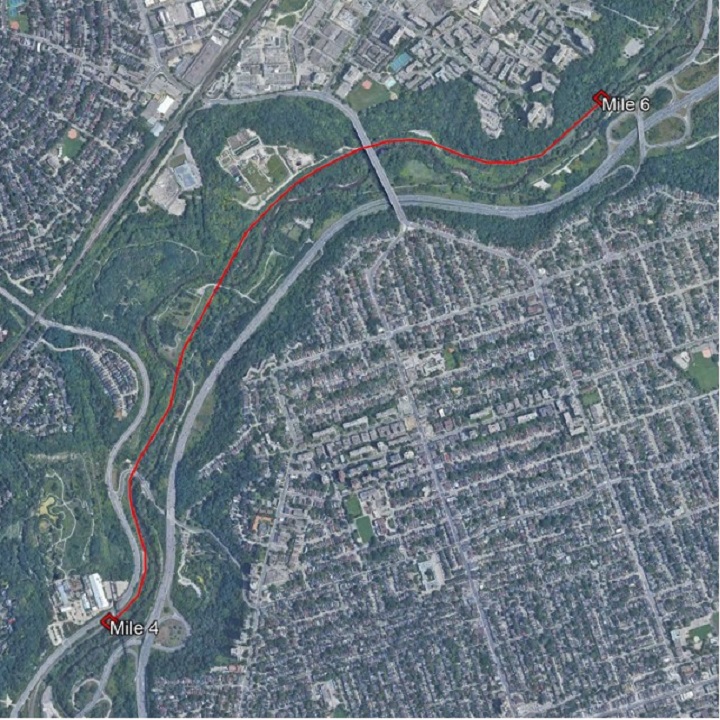As we get out in Toronto to enjoy summer, officials are urging caution to those walking or biking in the Don Valley after a highly invasive plant called giant hogweed was found in several patches.
“Definitely in terms of health concerns, it’s at the top of the list because of the burns it can cause when you come into contact with it,” Karen McDonald, the senior manager of ecosystem management with the Toronto and Region Conservation Authority, told CityNews on Friday.
“You get sap onto your skin and that skin is exposed to sunlight, ultraviolet radiation, it can cause really severe burning and this burning can persist, it can blister, and it’s very, very painful.”
Giant hogweed, a white-flowered plant considered an invasive species, can pose a threat to our environment.
“It does degrade habitat and lower biodiversity, hogweed grows really early in the spring and because it grows so large plants can be up to five meters tall with really big leaves — 1.5 meters wide — it outcompetes our native vegetation,” she said.
There have been reports of giant hogweed in parts of Toronto and the GTA before, but as people flock to popular trails like ones in the Don Valley there’s a bit more cause for concern.
Naturally drawn to river areas, McDonald said giant hogweed plants can drop anywhere from 50,000 to 120,000 seeds. While not all will germinate, she said the seeds can flow in water and last for three days. The wind can also carry the seeds up to 10 meters. With giant hogweed able to happen so easily, the plants can eventually cause erosion and threaten fish if left unchecked.
She encouraged people to report and monitor giant hogweed sightings on the University of Georgia’s Early Detection and Distribution Mapping System (EDDMapS) website.
RELATED: Giant hogweed can cause third-degree burns and blindness, group warns
Metrolinx crews doing maintenance on the Richmond Hill GO train corridor have seen patches of giant hogweed between ET Seton Park in Thorncliffe Park and the Evergreen Brickworks near rail tracks and on City of Toronto land.
“When we see this plant and because it also spreads very readily, we want to do the responsible thing and the safe thing which is to take steps to actually remove it,” Metrolinx spokesperson Matt Llewellyn told CityNews, adding specialized contractors are being brought in .
“This type of plant can’t be burned, it can’t be composted, and so herbicide has to be used – a very particular and strong type of herbicide that needs to be used in this case – and then obviously there needs to be the appropriate personal protective equipment.”
McDonald echoed the need for specialized removal. She said herbicide treatments need to happen twice (earlier in the year and at the end of the summer) in order to kill larger plants. For low-growth giant hogweed plants, it requires mowing every two weeks in order to fight off aggressive regrowth. McDonald noted weed wackers can’t be used as it can cause the sap to widely spread.
CityNews asked City of Toronto staff what they are doing about the problem.
In a brief statement, a spokesperson said they’re looking at the best way to control giant hogweed in the areas reported and that it’s being treated as a public health and safety issue.
Meanwhile, McDonald said other plants such as cow parsnip can also cause dermatitis and urged caution.
“If you don’t know a plant, just don’t touch it and you’ll be safe,” she said.
